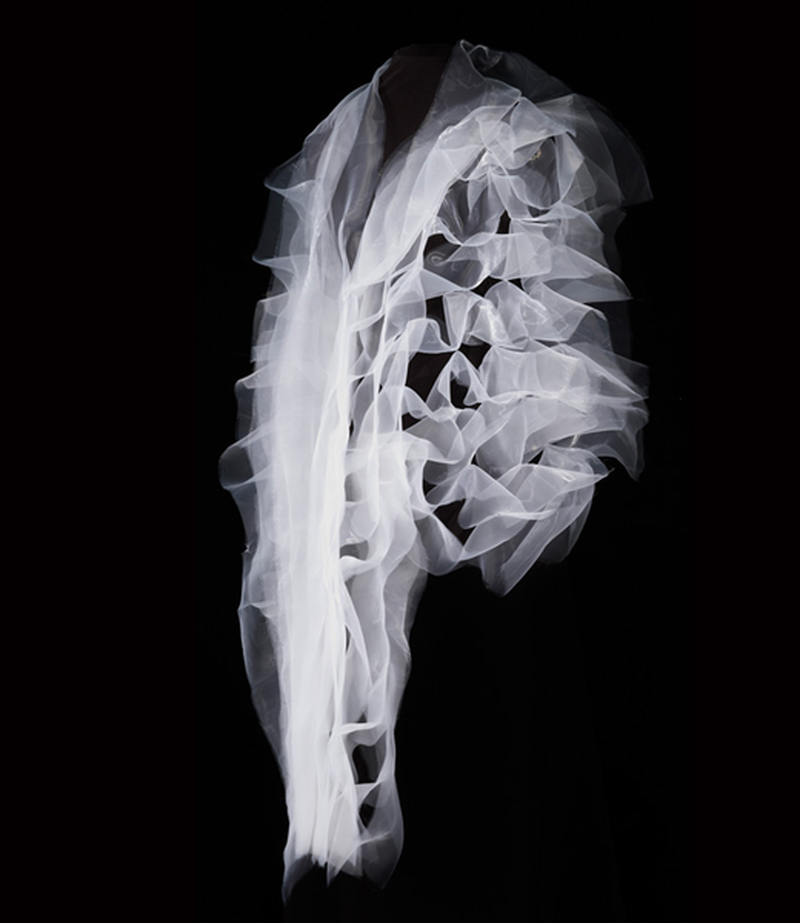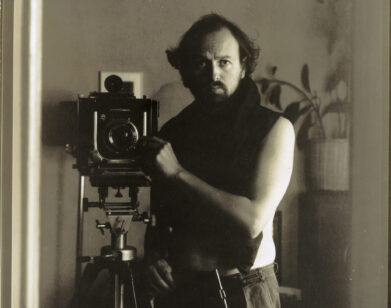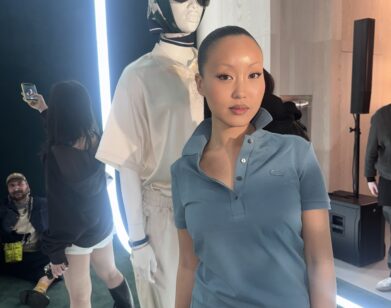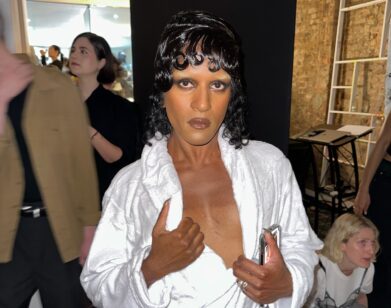Ying Gao’s Delicate, Fashionable Pod

“I do not want to play magician,” Ying Gao says amidst the whirring mechanical sounds emanating from the gears that make the thick leather and chiffon flowers on her simple gray shift dresses move as if underwater. “I want people to understand that there is a mechanism at work, without letting them see the ugly wires.”
Although the technology behind Gao’s “Living Pod” dress is, as she describes it “a mess,” Gao’s overall aesthetic is as graceful and delicate. During a visit in the midst of Montreal’s Fashion Week to Gao’s atelier inside the UQAM’s Graduate School of Fashion where she teaches, she discussed how her work hovers between conceptual fashion and art. The Beijing-born, Swiss-educated and Montreal-based designer creates kinetic clothes that express an idealized relationship between the garment and its environment.
LIVING POD; ORGANZA
Gao is currently crafting a white mini-dress out of Japanese organza, which she describes as “lightest material on earth,” and has the consistency of frost. She is developing a dress for exhibition which will use sensors to respond sensors to a viewer’s breath when he or she blows into a microphone-shaped device nearby. “When someone blows into the microphone, then the dress breaths back,” she says. “I am trying to use air as a material. I want the work to speak to the relationship between the real and tangible versus that which is illusory. Air makes the dress interactive.” In the style of Hussein Chalayan, she says her aim is to use technologies to make garments that “become a part of the world around it.”
There is an irony to Gao’s use of a medium that exists and interacts in the world, and rendering it so fragile and poetic that it only functions isolated in the context of conceptual art. While Gao will present her work alongside pieces by Paco Rabanne and Issey Miyake at the “Pap(i)er Fashion” at Zurich’s Museum Bellerive in April and at the Design Museum in Israel in October, she doesn’t plan her interactive designs ever being integrated into street life. However, Gao is currently working on a pret-a-porter line of women’s, men’s and unisex wear which she will launch next season. Most of those pieces are magnificently sculpted, simple daywear items. She weaves the same Japanese organza into a scarf with open accordion folds that can be worn as a diaphanous evening accessory. And her black geometric men’s coat made from glazed paper is sharp and functional, with a lightly cyber-futuristic cut that would appeal to the Japanese cyber-culture able to decipher the science behind her wondrous garments.
Gao does not see this new venture as a dilution of her interests or aesthetic. “I need to do this as an exercise,” she says. “I need to know that conceptual fashion can be extended into something wearable. Most people either see them as gadgets or as art but I want people to understand that my clothes are conceptual fashion and what that means. I need to explore the boundaries between ideas and reality.”






